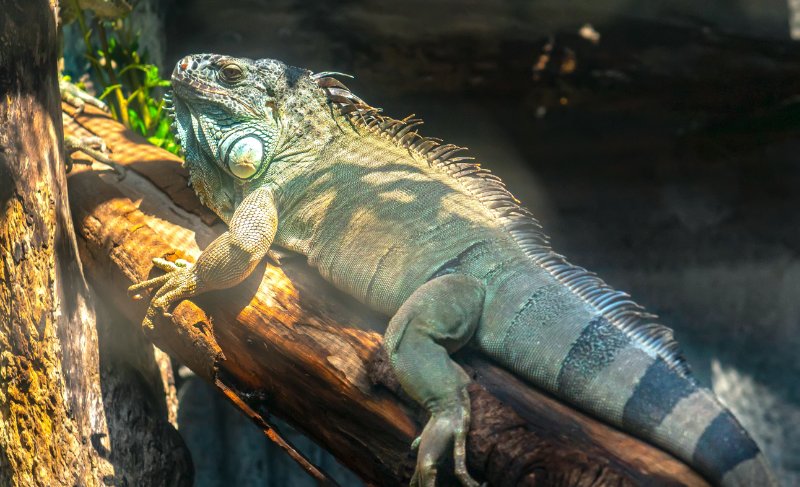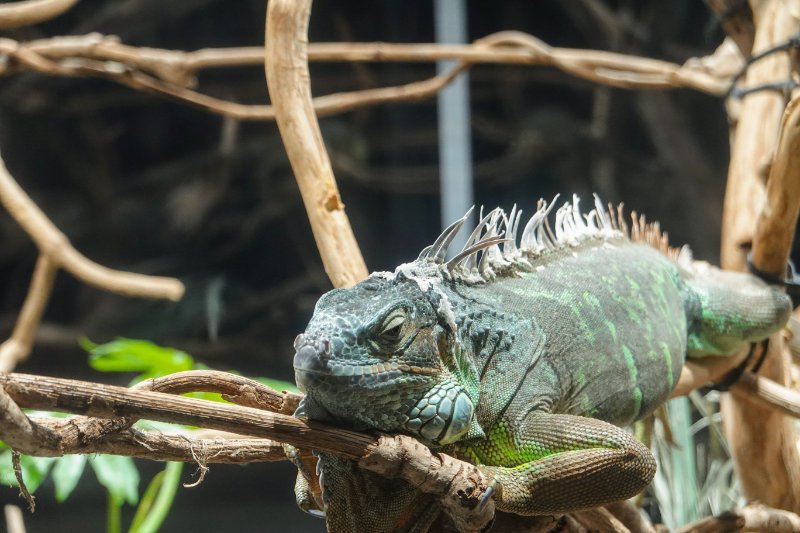“
If you’re an animal enthusiast, particularly with a fascination for reptiles, the charisma of the great “Giant Iguana” is hard to ignore. Originating from intimate corners of the Caribbean, Central, and South America, iguanas are spectacular creatures. For the sake of our focus today, we’ll emphasize one unique kind, widely desired as a companion – the green, giant iguana.
A Glimpse at the Giant Iguana’s Intriguing Characteristics
Let’s discern a few fascinating attributes that these reptiles proudly showcase. Starting with the noticeable third parietal eye at the back of their heads, these creatures impart a sense of mystery. Additionally, their row of spines, running down their back to their tail, provides them a distinctive appearance. However, one should not forget the textured feel of their countless scales. They are indeed a testament to nature’s intricate handiwork.

Not So Easy to See
Mighty in their vision, the iguanas can spot movements from afar. This skill assists them well in locating food, navigating their surroundings, and communicating with their kind. Their capability to camouflage perfectly within their environment is an added advantage, helping them elude more substantial predators.
The Giant Iguana Variations: Understanding the Difference
While they may seem quite alike, the Green Iguana and the Lesser Antillean Iguana bear unique physical contrasts. The Lesser Antillean kind typically has a concise face, a burly build and misses out on the tail stripes we see on their Green counterparts.

Choosing the Right Giant Iguana
The green, giant iguana is a preferred choice for a pet. Often, when buying a young one, you might wonder how to ensure it grows to its full potential, living up to the ‘giant’ in its name. When shopping for an iguana, keep these points in mind:
- Health is the priority. Look for an alert and active iguana. A healthy one flickers its tongue and appears curious about its surroundings. Also, their bodies should be free from lumps or scratches.
- Pay attention to the size of the cage. The iguana’s growth can be significantly impacted by the room it gets. Smaller aquariums limit growth, but a large homemade cage can encourage their natural growth.
- The right diet is crucial. Young iguanas should be fed daily. Leaves, lettuce, pears, and carrots are suitable for their diet. Your pet store can also provide a comprehensive diet list.
- Habitat conditions are to be checked. Maintain a temperature of eighty-five degrees, provide daily water, a small swimming area, climbing facilities, and proper lighting.
See Related:Iguana Terrarium
In conclusion, if you decide to bring a green, giant iguana into your home, be prepared to dedicate your efforts to provide proper care. With attention to its needs, this reptile can grow large, becoming an intriguing addition to your home. However, always research comprehensively before deciding on any pet.